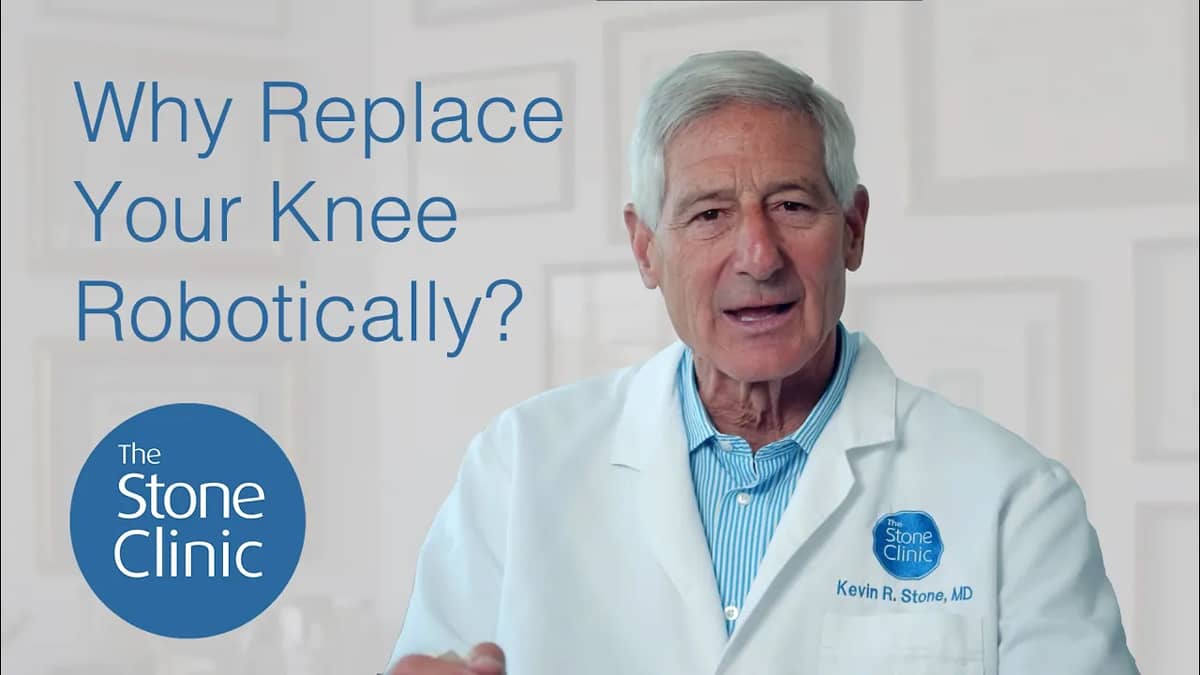Athletic Approach to Knee Replacement
Hear From Our Patients
Partial Knee Replacement Patient from Canada (1 year post-op)Artificial knee replacement surgery used to mean the reduction of sports activities like golf, swimming, and cycling. Yet with severe arthritis affecting younger and younger people, we are currently pushing the envelope of sports participation with joint replacements and learning as we go.

Here is the data as we interpret it:
Artificial joint replacement for the knee, or total knee replacement (TKR), is an end-stage decision and the last resort after all other procedures have failed. Why? Because once the knee ligaments are removed and the surfaces of the natural joint are replaced with metal and plastic, the joint is no longer normal, and the failure rate is substantial. Approximately 50,000 total knee replacements require revision surgery each year. Thirty percent of patients are not satisfied and up to 50% have pain at 10 years with no good solutions. Yet despite these scary numbers, when the knee is totally worn out in all three compartments, a TKR dramatically relieves pain and can return people to active lives.
It is important to note that up to 80% of people told they need a TKR may not need one, according to the data from an Oxford study of partial knee replacements. Usually, one part of the knee is the most worn and is causing most of the pain. This part can either be treated with a cartilage and meniscus replacement (called a BioKnee®) or with an artificial component, a partial knee replacement. By preserving the ligaments and resurfacing only the worn part, knees treated this way feel much more natural. In addition, these are outpatient procedures and have a faster recovery time. The old data contending that partial knee replacements are not as long-lived as TKRs has been superseded by data from robotically-placed partial knee components1. Part of the reason is that a robotically-assisted surgeon is simply more accurate than a human surgeon can be on their own.
For those who do require a TKR, the dissatisfaction with the procedure’s results might be due to the fact that surgeons have often told TKR patients not to exercise. Only resistance exercise builds muscle and bone, so these activity restrictions may have led to loosening of the components as the patients’ age and the bone becomes osteoporotic. If patients are encouraged to exercise, they build muscle and bone and increase their sense of well-being—thereby improving the joint replacement outcomes.
The key is for patients to see themselves as athletes in training, as opposed to patients in rehab. We think patients should have the option to be treated like a pro athlete. After a lower extremity injury, they spend hours each day in physical therapy, in the gym, and with massage therapists. They will focus on optimizing their diets; working on flexibility, balance, strength, and proprioception; and cross-training their upper bodies with a variety of fitness programs. Every TKR patient can adopt some or all of these activities. Starting before surgery and resuming on day one after surgery, the road to becoming “better than you have been in years” is clear—and the prospect of performing all of one’s exercises without arthritis pain is enticing.
I personally tell my patients to increase their exercise programs after joint replacements. Many are participating in Ironman competitions, triathlons, and endurance events. When I travel around the world to give lectures, I always ask my colleagues if they have ever seen a TKR fail as a direct result of exercise. Almost none have—yet, they have told decades of patients not to exercise.
Clearly, some exercising patients will knock their implants loose or cause increased wear that may lead to loosening. Yet, the vast majority will improve their lifestyles, lower their weight, and increase their bone density and muscle mass—actually protecting the implant while enjoying their lives.
Over the coming decades, we will see if increased exercise leads to a higher rate of TKR failure. In the meantime, I vote for exercise.
References
1 Kleeblad, L. J., Borus, T. A., Coon, T. M., Dounchis, J., Nguyen, J. T., & Pearle, A. D. (2018). Midterm Survivorship and Patient Satisfaction of Robotic-Arm-Assisted Medial Unicompartmental Knee Arthroplasty: A Multicenter Study. The Journal of arthroplasty, 33(6), 1719–1726. https://doi.org/10.1016/j.arth.2018.01.036
Here's how Dr. Stone performs knee replacement surgery at the Robotic Joint Center
Learn how recent advancements in TKR robotic-assisted surgery technology give Dr. Stone unparalleled accuracy in placing knee replacement implants, allowing for a quicker recovery time, better range of motion, less pain medication, and greater durability for demanding activities.



